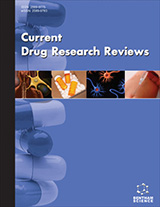
Abstract
Background: Gelsemium elegans (G. elegans) has been shown to have strong pharmacological and pharmacodynamic effects in relevant studies both in China and USA. G. elegans has been used as a traditional medicine to treat a variety of diseases and even has the potential to be an alternative to laboratory synthesized drugs. However, its toxicity severely limited its application and development. At present, there is little attention paid to protein changes in toxicity.
Aim: This study investigated the toxicity effects after long-term exposure of G. elegans of the rat brain through proteomic.
Methods: : 11 differential abundance proteins were detected, among which 8 proteins were higher in the G. elegans- exposure group than in the control group, including Ig-like domain-containing protein (N/A), receptor-type tyrosine-protein phosphatase C (Ptprc), disheveled segment polarity protein 3 (Dvl3), trafficking protein particle complex 12 (Trappc12), seizure-related 6 homologlike (Sez6l), transmembrane 9 superfamily member 4 (Tm9sf4), DENN domain-containing protein 5A (Dennd5a) and Tle4, whereas the other 3 proteins do the opposite including Golgi to ER traffic protein 4 (Get4), vacuolar protein sorting 4 homolog B (Vps4b) and cadherin-related 23 (CDH23). Furthermore, we performed validation of WB analysis on the key protein CDH23.
Results: Finally, only fewer proteins and related metabolic pathways were affected, indicating that there was no accumulative toxicity of G. elegans. G. elegans has the potential to develop and utilize of its pharmacological activity. CHD23, however, is a protein associated with hearing.
Conclusion: Whether the hearing impairment is a sequela after G. elegans exposure remains to be further studied.
Keywords: Gelsemium elegans, proteomics, toxicity, CDH23, hearing, western blot.
Graphical Abstract
[http://dx.doi.org/10.1021/np5009619] [PMID: 26103517]
[http://dx.doi.org/10.3109/13880200903490521] [PMID: 20860436]
[http://dx.doi.org/10.1016/S0378-8741(03)00267-8] [PMID: 14522437]
[http://dx.doi.org/10.1016/j.pbb.2012.02.009] [PMID: 22366214]
[http://dx.doi.org/10.1016/j.fitote.2012.04.023] [PMID: 22579843]
[PMID: 19778809]
[http://dx.doi.org/10.1016/j.fitote.2014.11.002] [PMID: 25447163]
[http://dx.doi.org/10.3389/fneur.2017.00204] [PMID: 28567028]
[http://dx.doi.org/10.1016/j.jhazmat.2019.120999] [PMID: 31430640]
[http://dx.doi.org/10.1016/j.puhe.2016.02.031] [PMID: 27026250]
[http://dx.doi.org/10.1097/00000433-198812000-00009] [PMID: 3239549]
[http://dx.doi.org/10.1016/j.jep.2014.01.003] [PMID: 24434844]
[http://dx.doi.org/10.1016/j.jep.2020.112617] [PMID: 31988014]
[PMID: 25272824]
[http://dx.doi.org/10.1002/ptr.4914] [PMID: 23280778]
[http://dx.doi.org/10.1038/4551054a] [PMID: 18948945]
[http://dx.doi.org/10.1016/j.jprot.2019.103394] [PMID: 31146049]
[http://dx.doi.org/10.26355/eurrev_201811_16393] [PMID: 30536315]
[http://dx.doi.org/10.1091/mbc.e10-11-0873] [PMID: 21525244]
[http://dx.doi.org/10.1016/j.ajhg.2017.07.006] [PMID: 28777934]
[http://dx.doi.org/10.1016/j.febslet.2006.06.043] [PMID: 16814779]
[http://dx.doi.org/10.1038/emboj.2012.173] [PMID: 22728825]
[http://dx.doi.org/10.1074/mcp.M114.041533] [PMID: 26139848]
[http://dx.doi.org/10.1007/s13238-018-0554-3] [PMID: 29869113]
[http://dx.doi.org/10.1016/j.tcb.2007.07.002] [PMID: 17643306]
[http://dx.doi.org/10.1007/s00213-010-1855-2] [PMID: 20401745]
[http://dx.doi.org/10.1016/j.ydbio.2005.01.015] [PMID: 15882574]
[http://dx.doi.org/10.1038/nature02483] [PMID: 15057245]
[http://dx.doi.org/10.1016/0378-5955(84)90041-8] [PMID: 6436216]


























